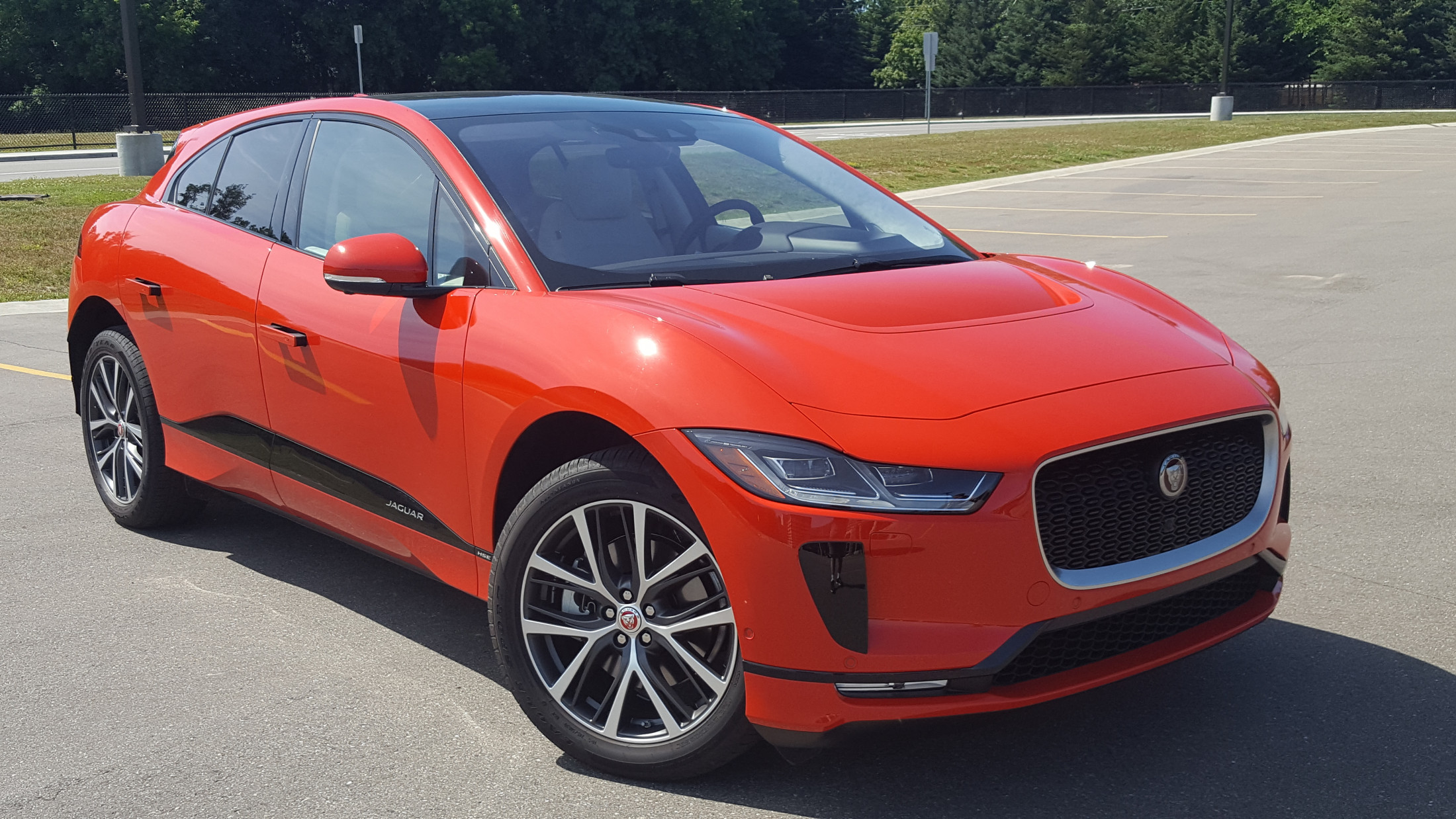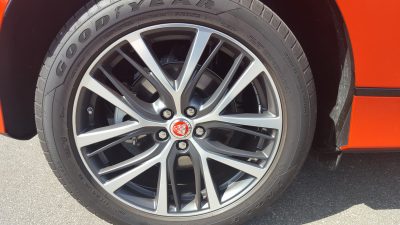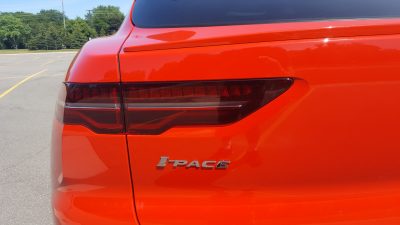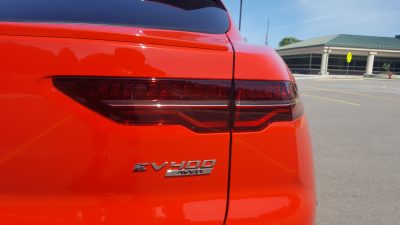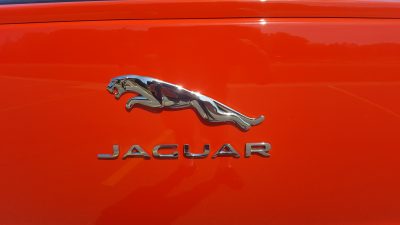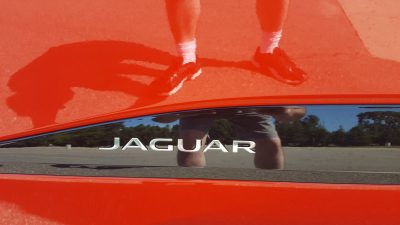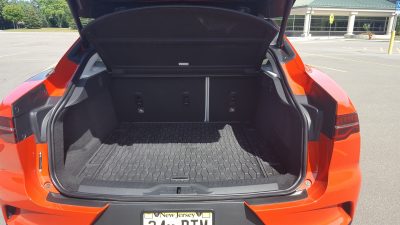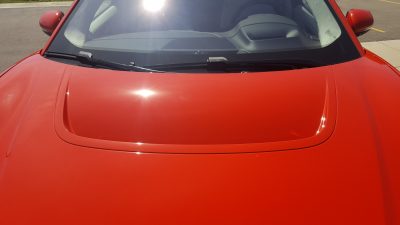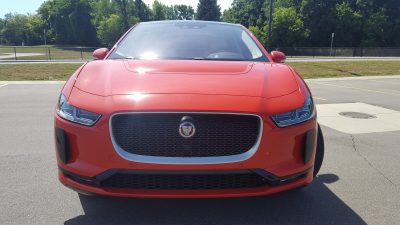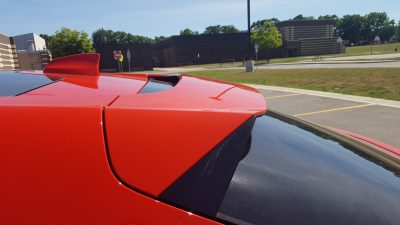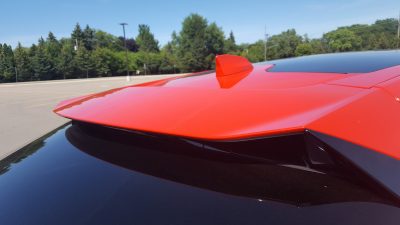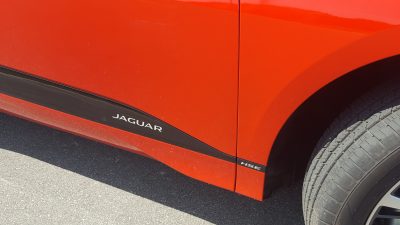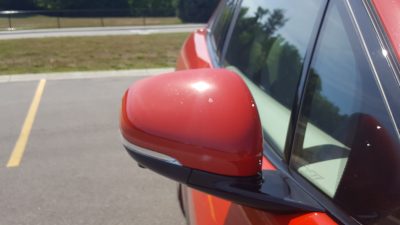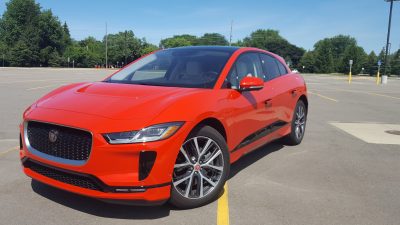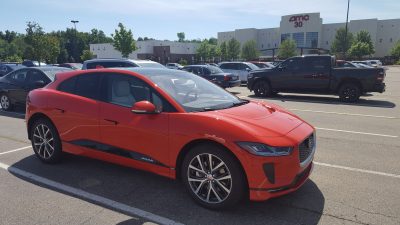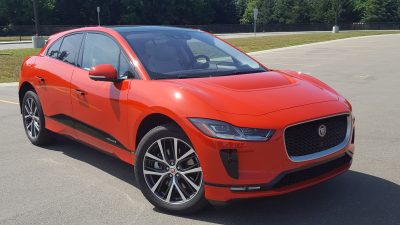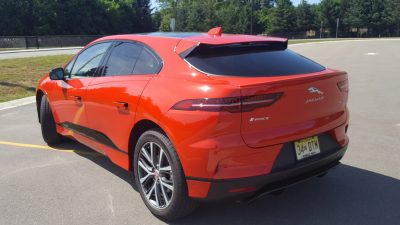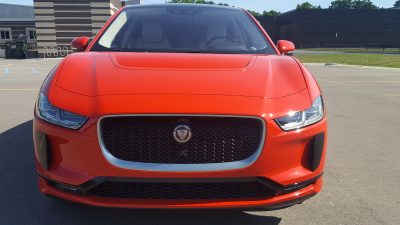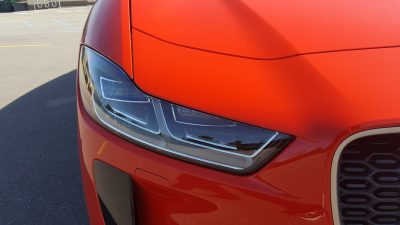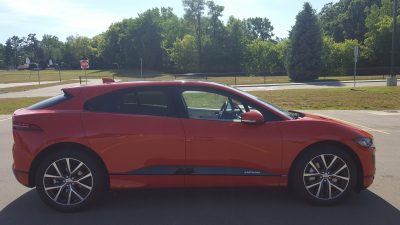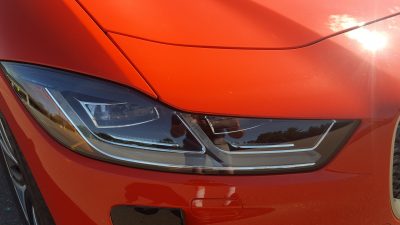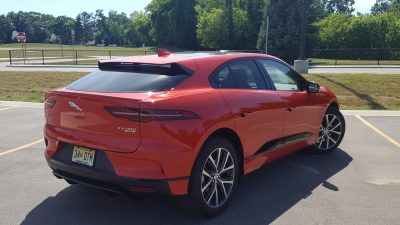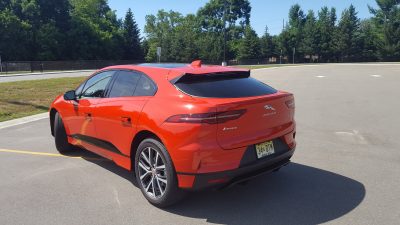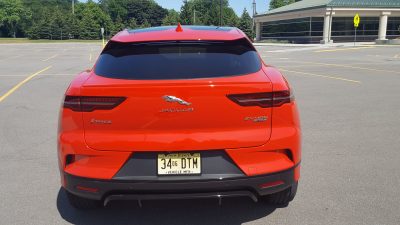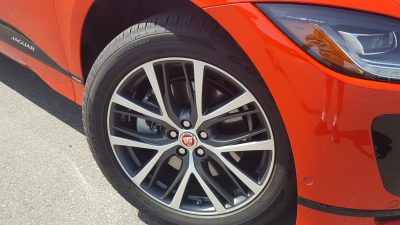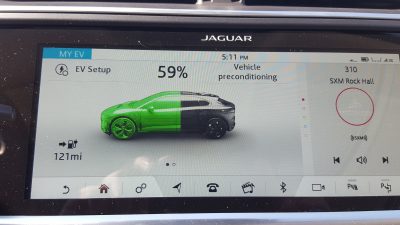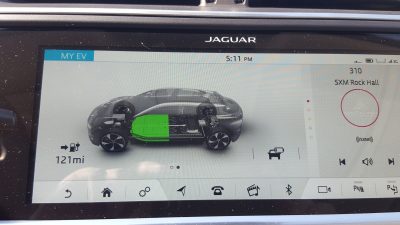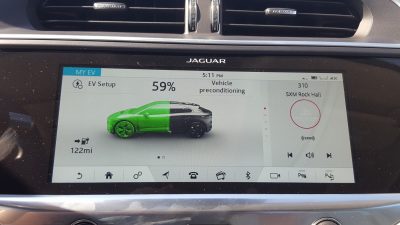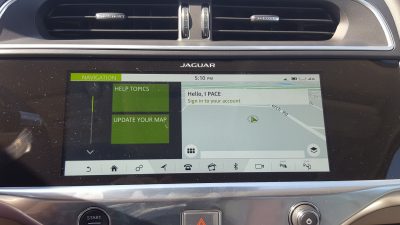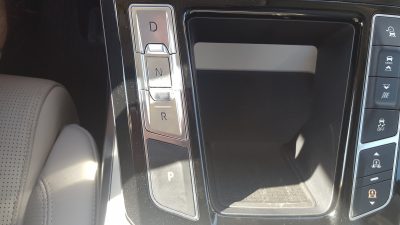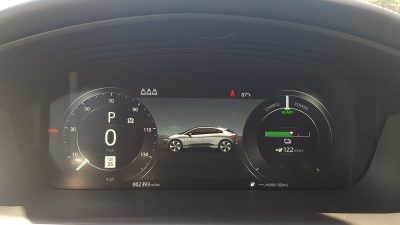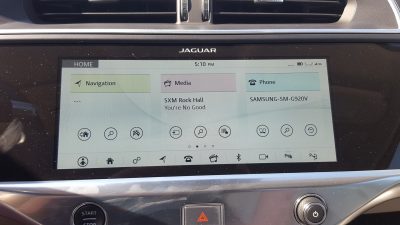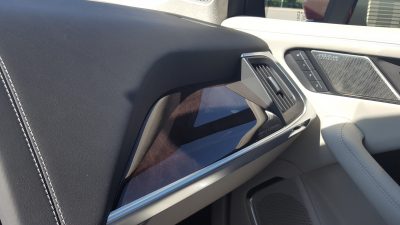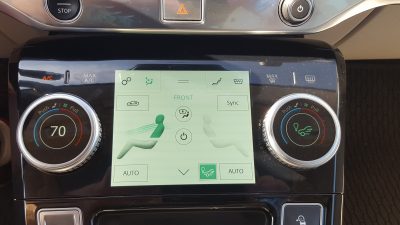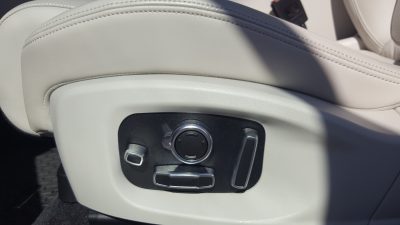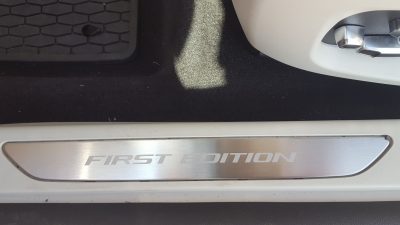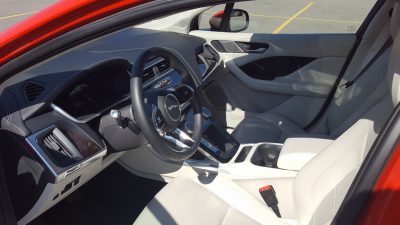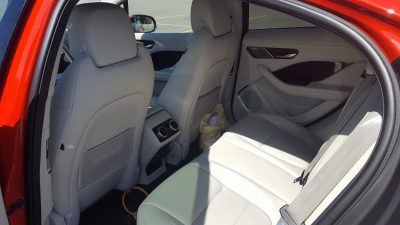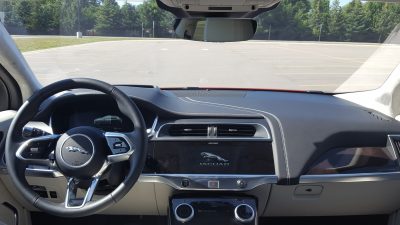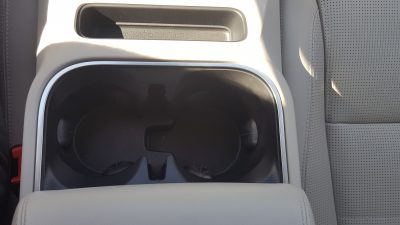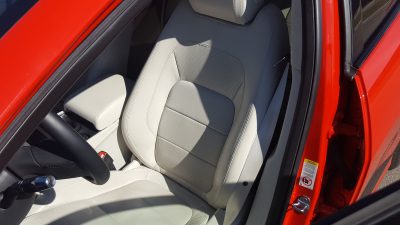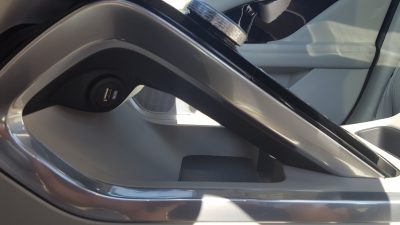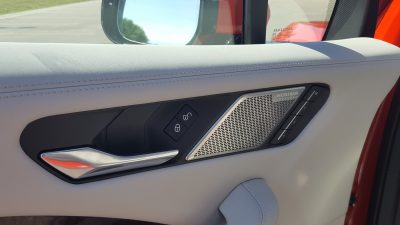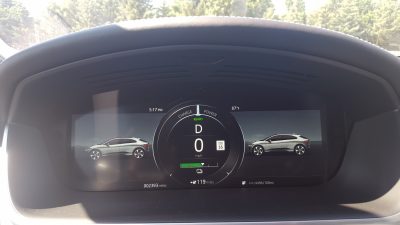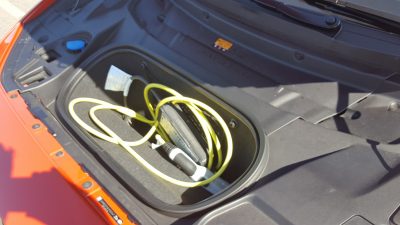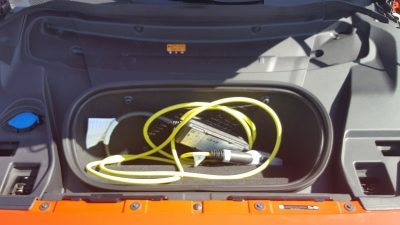When Jaguar first announced that it was formally entering the EV vehicle market, we we’re admittedly a bit skeptical at first. The thought of a company with a history of electrical problems building a pure EV? Blasphemy, some might say when first presented with the thought. But after years of development, the Jaguar I-Pace has finally begun trickling its way into dealerships, and it is out to change perceptions, while also establishing Jaguar as a mainstream contender to the Tesla Model X. But can the I-Pace rise above the others to deliver a distinctly unique driving experience? We had a chance to get behind the wheel, and you might be pleasantly surprised with some of the moves that this electrified kitty brings to the green car table.
A Stylish EV? You Bet It Is:
While many EV offerings tend to sacrifice styling and design aesthetics to help them excel in their green focused function, the Jaguar I-Pace is a welcome exception to the rule. Looking at it from many angles, the I-Pace is a very pretty vehicle to adore. So what if the EV can’t decide if it wants to be a coupe or a crossover with a boxed design, Jaguar’s current design language works very well with the I-Pace, and there are certainly a number of elements that are quite appealing when viewed by discerning eyes. The prominent rectangular grille and its rounded edges help the I-Pace establish a noticeable link to its heritage, and Jaguar designers also managed to elegantly position it between the slim LED headlights that make the I-Pace looks like it is ready to pounce at any given moment. The I-Pace shares this basic design theme with the F-Pace, XE, and the XF, and the basic profile of our Photon Red (it looks orange to us) tester has a slinky look to it that is very svelte and curvaceous. A small rear deck spoiler is adorned to the rear of the I-Pace, while the tail itself features equally slim LED taillights. These lamps are very similar to the C-X75 concept, and we like the fact that the bulk of its showcar styling has managed to stay thoughtfully intact in the transition from concept to production.
But it’s ultimately the little things that makes the broader design work, the sculpted hood vent for instance is very reminiscent of the concept’s, while the aggressive rake in the rear window and the wide hips help the I-Pace look great when viewed in profile. When compared with its main rival the Tesla Model X, it is nice to see that the I-Pace has a more conventional appearance versus the more futuristic Tesla and its overly elaborate falcon wing door assemblies. This will certainly help the I-Pace age better in the second hand market, and it’s hard to ignore an electric vehicle that actually has some substance to its sleek styling (take notes Chevrolet Hyundai and Toyota.)
Elegant Luxury Is Marred By Overcomplexity And Tight Rear Seats:
Like the exterior, the interior of the 2019 I-Pace is quite modern, with three displays for all essential information, as well as touch capacitive controls. The floating bridge design for the center console is a very nice design element, and it really does make the driver’s seat feel like a snug yet purposeful cockpit. The InControl Duo infotainment system in our tester also lends to the futuristic ambiance, but like in the Range Rover Velar, we did notice instances where the system was slow to process certain inputs, and on two separate occasions the system itself took too long to load the main menu. Both screens also tend to washout in intense sun glare, and that can make both screens hard to read when on the move.
While we’re complaining, some settings are far more complicated to adjust than they should be, with our tester arriving at the Metro Detroit office with everything but the battery range indicator set in metric. We tried to fix it ourselves, but soon discovered that unlike other cars, Jaguar insists that you adjust each readout individually versus offering an ala carte button to do it all at once. This forced us to take an impromptu trip to Jaguar of Troy (our local Jaguar dealer) where a helpful service porter was able to work through the web of steps, and restored the offending gauges to English measurements in less than 5 minutes. That annoyance aside, our tester’s more intimate details helped sway us back into its seductive embrace, and this included its beautiful wood trim, metal accents, as well as the big glass panel in the roof. It lacks a retractable cover, but we did like the fact that Jaguar designers were kind enough to tint the glass to help reduce the amount of excess glare that enters the passenger space.
Front seat passengers will immediately be impressed with how comfortable the seats are in the I-Pace. While our tester did not have the optional sport seats, the thrones that were present still offered a balanced mixture of comfort and support. The latter helped make the I-Pace an impressive weekend companion especially when tasked with spirited road trips down your favorite backroad. The cab forward design also helps enhance headroom, which negates any of the loss generated by the fore-mentioned glass roof panel. Rear passengers however have to deal with tighter amounts of head and legroom which is partially due with how deep the I-Pace’s dashboard goes into the cabin. This will force the driver and the front passenger to sacrifice some of their legroom to help accommodate guests. In short, look for this breed of feline to appeal more to empty nesters versus a growing family. The I-Pace also falls behind the Audi E-tron and the Mercedes EQC which offer more space, and also embrace a more conventional crossover shape.
But despite this, the I-Pace’s air suspension still did a good job mitigating the bumps and pockmarked roads that define the commute in Metro Detroit, and while the bigger wheels on our tester did produce a firmer ride than some of its rivals, we still came to appreciate the amount of poise and sublime comfort that the trick suspension was able to produce during our time with our tester. The I-Pace also comes loaded with a generous amount of standard equipment, which included LED headlights with automatic high beams, the fore-mentioned dual touchscreen infotainment system, as well as an 825 watt Meridian surround sound system.
“Holy Electrons Batman”:
That’s what we said when we first took the I-Pace out for a formal drive. The twin electric motors on hand produce 394 horsepower, and an impressive 512 lb-ft of torque which allows the I-Pace to sit firmly between the Audi E-tron and the 402 horsepower Mercedes EQC when it comes to a battle of horsepower figures. However, it is the Jag that is the quicker of the trio, with this electron powered kitty only needing 4.5 seconds to make the sprint to 60 mph versus 5.5 in the Audi, and 4.8 in the EQC. Power delivery is instantaneous, and putting the I-Pace into Sport mode greatly amplifies the effect, with torque being available in big tasty lumps, which allows the I-Pace to have a very controlled but still very aggressive power band. A single speed automatic helps send all of this power to all four wheels, and this simple setup ensures that there is hardly any waiting while the torque makes its way to the road.
But arguably the biggest trump card wielded by the I-Pace is its impressive handling manners. Unlike other EVs which tend to lag in this area due to the way their heavy battery packs are positioned in the floor, the I-Pace can dance with the best of them. It does not have as much precision as an XE or an F-type, but the I-Pace still puts on a very strong performance. While its 4,784 lb curb weight may look a bit porky at first glance, it’s still very light for its segment. Combine that with the aggressive air suspension and the car’s low center of gravity, and this Jaguar can do a good job pleasing even the most demanding of drivers. The fore-mentioned air suspension allows the I-Pace to have a very composed and flat handling character, which in turn helps create a capable platform that can be tossed about in a reasonably dynamic fashion, thanks to its quick steering, as well as the darty way it changes directions. This is a noticeable improvement from other entries that tend to put all their chips on ride comfort, and force handling behavior to be at the bottom of the totem pole in terms of relevance.
Jag engineers have also extended their engineering to the regenerative braking system. In an era where clumsy regen behavior still dominates mainstream segment entries like the Toyota Prius and the soon to be axed Ford Fusion Hybrid, it is very encouraging to see the I-Pace employ a system that is the complete polar opposite of these expectations. This is mainly due to the way the electric motors help reign in the car up to a certain speed, before the traditional friction brakes kick in to finish the job. The last time we experienced a comparable sensation of smoothness in regen braking is the cruder system that is equipped to eAssist variants of the Buick Regal and Lacrosse. Our tester delivered smooth stable stops, with the air suspension helping to mitigate nose dive and body shudder.
Lastly, the I-Pace also aims to reduce range anxiety by offering owners up to *234 miles of driving range on a full charge. You might ask why there’s an asterisk in that figure? Well, that’s because this figure is only possible when being driven in Eco mode, and with the climate control and other battery draining equipment turned off. When used in more realistic driving, we noted range figures that tended to hover between 183 and 204 miles. This is still very good, but is also a prominent example of reading the fine print when viewing maximum figures like this across the broader segment. The I-Pace does noticeably lag behind its rivals in charging time, with a zero to 80 percent charge taking over 10 hours when hooked up to a conventional house outlet. This time shrinks to three hours when charging on a DC fast charger. For comparison, the EQC can get to 100 percent charge on 240 volts in roughly the same time, while the E-Tron can get it done in nine hours.
Value Quotient:
Pricing for the 2019 Jaguar I-Pace is on par with its equally bespoke rivals, and that translates into a rather pricey affair. A base I-Pace will set you back $69,500 which does not include the $995 destination fee, as well as the $7,500 federal income tax credit. This is a noticeable savings over the $74,800 Audi E-Tron, and is also a cheaper price of entry than the $71,950 Tesla charges to own a base Model X. However, opt for an HSE First Edition like our tester, and be prepared to pay dearly for the privilege. Base HSE models start at $85,900, and while our lightly optioned tester had a final sticker of $88,001. A quick search of the internet will reveal more equipped examples that easily surpass $90,000 due to adding exotic paint colors, interior options, as well as carbon fiber accents to the order sheet. Our advice is to stick to a lower tier I-Pace, and to focus on select options to help reduce the sticker shock. HSE models also add a $11,000 premium to the asking price, so that will certainly be something to consider when you are crunching the numbers. The Audi E-Tron has a cheaper $74,800 base sticker, but like the Jaguar, the price can swell up very quickly with optional extras. Meanwhile, EQC pricing has not been released as of this writing, but look for pricing to be somewhat above the Jaguar when it eventually makes its way to Mercedes showrooms.
While it does come bundled with some notable flaws, the 2019 Jaguar I-Pace is a very compelling glimpse into a future where EVs can actually blend surprising amounts of fun into a still very environmentally centric package. It also serves as an example that styling does not have to be sacrificed to achieve maximum functional gain, and that handling and battery packs can indeed co-exist together in an EV. We look forward to seeing what’s next for the Jaguar I-Pace, especially if it gets timely revisions to the interior, and the Defender’s upgraded Pivi Pro infotainment system.

Carl Malek has been an automotive journalist for over 10 years. First starting out as a freelance photographer before making the transition to writing during college, his work has appeared on numerous automotive forums as well as websites such as Autoshopper.com.
Carl is also a big fan of British vehicles with the bulk of his devotion going to the Morgan Motor Company as well as offerings from Lotus, MG, and Caterham. When he is not writing about automobiles, Carl enjoys spending time with his family and friends in the Metro Detroit area, as well as spending time with his adorable pets.

